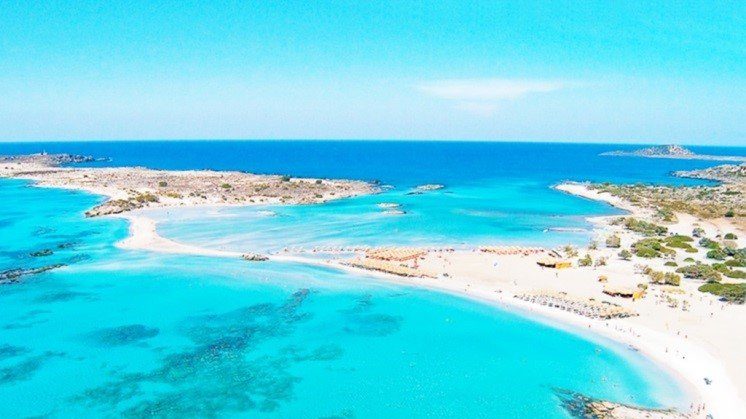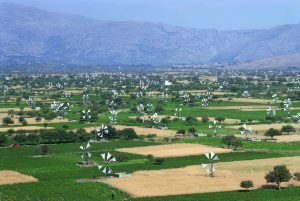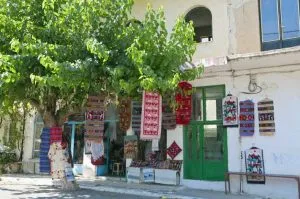I remember my first glimpse of Elafonissi Island as if it were yesterday. The journey to the coastline of Chania led me through a canvas of mountain vistas and charming villages, culminating in the breathtaking sight of pink sands meeting turquoise waters. Known for its pristine natural beauty, Elafonissi is a protected nature reserve that offers a perfect blend of relaxation and exploration.
Getting There
For those of us starting our journey from Heraklion, where many visitors find accommodation, reaching Elafonissi is an expedition worth the effort. By car, the drive takes approximately 3.5 to 4 hours, traversing a scenic route that lets you witness the diverse landscapes of Crete. If you’re unsure about driving, Google Maps provides reliable directions that are easy to follow, making the drive a hassle-free part of your adventure.

You can use this link for the driving directions: https://maps.app.goo.gl/3F99iQe9iYqLj6nc9
If you’re not planning to drive, several local travel agencies offer organized bus excursions to Elafonissi for those who prefer to avoid driving. These trips ensure you can relax and enjoy the journey without the stress of navigating. Excursions typically occur on specific days, so checking the schedule in advance is essential. I recommend visiting the websites of our cooperating travel agents, Tourline and Cretan Odyssey, for detailed information about departure times, days excursions are available and to book your trip:
Tourline offers a pickup and drop-off service. Make sure to check the active links to get updated information constantly. They offer a free pick-up service from Heraklion. Transfers are air-conditioned luxury buses with multilingual-speaking guides on board. The drive to Elafonissi is about 4 hours.
Cretan Odyssey is another service you can consider. It provides a tour guide and a day tour to Elafonisi Beach from Heraklion. The tour includes an air-conditioned bus and various pick-ups in hotels and bus stops. It can last 12-13 hours, from pickup at around 6:30 a.m. to tour ending at around 8:30 p.m.
Both of these organized pickups and tours email you more information upon booking, so make sure to verify and check all details to be assured of all the details. This will help ensure you have the best visit in Elafonissi.
Keep in mind that while Elafonissi is organized with umbrellas available for rent, there are only basic canteen facilities offering refreshments and quick bites like souvlaki and toasts. Bringing your food and an umbrella for extended beach stays might make your visit more comfortable. Unlike many popular beach destinations, Elafonissi does not offer water sports, preserving its tranquil atmosphere.
It’s highly suggested that you bring sunscreen, keep it reef-safe if you can, wear comfortable shoes, have your swimsuits and beach towels ready, bring water and other hydration items, and bring hats and umbrellas for more sun protection.
What I Saw and Did

Pink Sand Beaches: My early morning walk along the pink sand beach was surreal. The soft hues of the sand, enriched by crushed shells and coral, glowed under the rising sun, creating a serene ambiance. It’s a photographer’s paradise, especially during the golden hours of dawn and dusk.
Snorkeling and Swimming: The shallow, clear waters near the shore beckoned me to snorkel. The sea life was abundant, and the water was so clear that it felt like swimming in a giant aquarium. Treating this marine sanctuary respectfully is essential, so I followed all guidelines to minimize my impact on the delicate ecosystem.
Nature Trails: I explored several trails that weave through the island, each offering a unique view of Elafonissi’s diverse flora and fauna. The paths led me through dunes dotted with rare plants. They provided glimpses of local wildlife, reminding me of the island’s ecological importance.
Local Flora and Fauna: During my walks, I learned that Elafonissi is a haven for biodiversity. I was enchanted by chance to spot loggerhead turtles, a rare and protected species. Observing them from a respectful distance reminded me of the island’s fragile beauty and the critical need for conservation.
Conservation Efforts
During my visit to Elafonissi, I was deeply impressed by its dedication to preserving its natural beauty and wildlife. The island is a haven for tourists and various species, including the endangered loggerhead turtles. Local conservation groups actively monitor the beaches, especially during nesting season, to ensure that the turtles are undisturbed by human activity. Signs are placed strategically to educate visitors about the importance of not disturbing the marked nesting sites.
I also learned about removing invasive plant species, which has helped restore the native vegetation, crucial for maintaining the island’s ecological balance. These efforts make it clear that visiting Elafonissi is a privilege, underscoring our responsibility to leave no trace and to participate in its preservation by following all guidelines.
Cultural and Historical Context
Elafonissi’s pink sands whisper tales not just of geological marvels but also of a rich historical tapestry. Historically, the island was a shelter from invaders and pirates due to its remote location and difficult access. I was told of a darker time during the Ottoman occupation when locals would escape to the island to avoid capture. This history of refuge adds a layer of profound respect to my visit, reminding me each step on its sands is a step through history.
Culturally, Elafonissi reflects the broader Cretan traditions of hospitality and celebration. Each year, the locals celebrate the feast of the Holy Cross on September 14th, commemorating a tragic event in 1824 when Ottoman forces massacred many locals. This day is now marked by remembrance and a celebration of peace and freedom, attended by many across Crete.
Practical Tips From My Experience

When planning your trip, consider staying until sunset. It’s a magical time when the pink sand truly comes alive, casting a glow that seems almost surreal. This spectacle is one of the most photogenic moments and a perfect closing to a day spent in nature’s embrace.
Best Times to Visit: I found that visiting in the quieter months of April, May, or late September allowed me to appreciate the island’s beauty without the crowds. The weather during these months is also ideal for exploring.
Where to Eat: With one or two canteens on the island, packing a picnic is a good alternative. Choose a secluded spot on the beach where I could eat surrounded by nature’s splendor.
Conservation Tips: As a visitor, I felt responsible for leaving no trace of my visit and ensuring that Elafonissi remained untouched for future generations. This meant following designated paths, keeping a safe distance from wildlife, and taking all my rubbish.
Conclusion
My time on Elafonissi Island was more than just a visit; it was a profound connection with nature. Each step on its pink sands, each swim in its azure waters, was a moment to cherish, a reminder of the delicate balance between enjoying nature’s gifts and preserving them.
As I bid farewell to this pink-sand paradise, I carried memories and a renewed commitment to respecting and protecting such incredible places worldwide.





































Leave A Reply